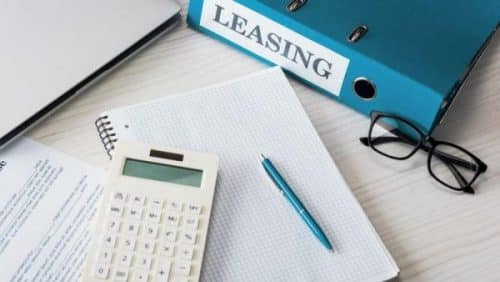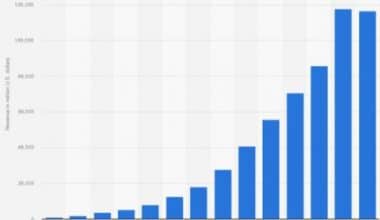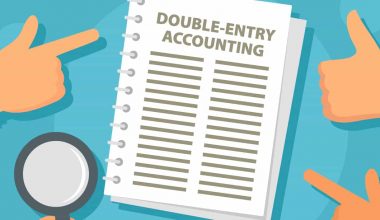Lease accounting is a critical accounting element since it varies depending on the end-user. Lessees and lessors report and account for leases in different ways. The asset is owned by the lessor, and the lessee uses it by paying the lessor on a regular basis. Accounting and reporting the lease in various ways has distinct effects on financial statements and ratios. So this is a guide for lease accounting be it a finance lease or capital lease. We’ll also go through the details of the new lease accounting standards ASC 842. But first, let’s look at the definition of a lease.
Lease Definition
A lease is a legal contract in which the owner of a certain asset (lessor) authorizes a third party (lessee) to use the asset for a fixed length of time in exchange for periodic payments to the lessor. These recurring payments are known as lease rentals. An operating lease is similar to an asset rental in many ways. It allows the lessee to use the leased asset for a defined length of time, which is usually less than the asset’s useful life. It is usually used to lease equipment for a limited period of time. A finance lease is quite similar to borrowing money to buy an asset. It enables a lessee to own an asset with direct financing from the lessor. At the end of the lease term, the lessee has the opportunity to become the permanent owner of the asset.
Lease Accounting Classification: Capital Leases vs. Operating Leases
Lease accounting are broadly classified into two types: operational leases and capital leases. Operating leases give the lessee the right to utilize the asset but do not give the lessee ownership rights. Capital leases, currently known as Finance Leases under ASC 842 lease accounting, are similar to operational leases except that the lease terms are more akin to ownership. This necessitates significantly different accounting for financial leases than for operating leases. There are five tests that can be used to establish if a lease is a financing lease. If any of these conditions are met, the lease should be classified as a finance lease in the financial statements.
- At the end of the lease period, title is transferred.
- The lessee has a buy option that is almost certainly going to be exercised.
- The lease period exceeds 75% of the useful life of the leased asset.
- The present value of the lease payments exceeds 90% of the fair value of the leased asset.
- Because the leased asset is so particular to the lessee, the lessor is unable to transfer it to another market player.
Prior to the adoption of the new ASC 842 lease accounting standards, operational leases that included the leased asset and its associated payment obligations were not recognized on the balance sheet. The new lease accounting standards, on the other hand, require lessees to record right-of-use assets and related lease liabilities for any operating leases lasting more than one year. Most businesses will see a considerable rise in the total number of leases reported on their balance sheets as a result of having to account for their operational leases, raising the total value of their assets and liabilities.
Lessee Accounting and Reporting
A lessee makes monthly payments to the lessor while using the leased asset. The accounting and reporting for various leases is done as follows:
Lessee Accounting for Finance Lease
The lessee reports the finance lease as follows on several financial statements:
- Both the leased asset and the lease payable (liability) are reported on the balance sheet. The stated value is the lesser of the present value of future lease payments or the fair market value of the leased asset.
- The interest expense on the lease payable is recorded on the income statement. It is calculated on the initial lease payment using the lease’s implied interest rate. In general, the interest rate used is the lower of the lessee’s borrowing rate and the lessor’s implicit rate. If the leased asset is depreciable, a depreciation expense is also reported in the same manner as any other asset.
Cash Flow Statement:
The interest component of the lease payment is reported as an operating cash outflow under US GAAP. Furthermore, the principal repayment component, which reduces the lease payable, is reported as a financing cash outflow. According to IFRS, interest expense can be reported as an operating cash outflow or as financing.
Lessee Accounting for Operating Lease
The lessee reports the operational lease as follows on various financial statements:
- There is no asset or liability listed on the balance sheet.
- Income Statement: The asset’s rent, which is the same as the lease payment, is expensed.
- The total lease payment or rent expense is represented as an operating cash outflow on the cash flow statement.
The Effect of Lease Accounting on the Financial Statements of the Lessee
The accounting differences in both leases – finance and operating – have an impact on the various aspects of the financial statements, as shown below:
- In a finance lease, assets, liabilities, net income in later years, operating income (EBIT), and cash flow from operations are higher than in an operating lease.
- In the early years, net income and cash flow from financing are lower in a finance lease than in an operating lease.
- Despite the fact, total income and total cash flow are the same in both contracts.
The Effect of Lease Accounting on the Financial Ratios of the Lessee
Financial ratios, like financial statements, are influenced by the many leases:
- Finance lease has a reduced current ratio, working capital, asset turnover ratio, fixed asset turnover ratio, return on assets in early years, and return on equity in early years.
- Finance lease has a greater return on assets, return on equity, debt to assets ratio, and debt to equity ratio in later years.
Lessor Accounting and Reporting
Lessor Accounting for Finance Lease
Under US GAAP, there are two types of finance leases for the lessor. If the present value of all lease payments equals the carrying value of the leased asset, the lease is referred to as a direct financing lease. A sales-type lease is one in which the present value of the lease payments exceeds the carrying value of the leased item. Both of these types of finance leases are reported by the lessor on various financial statements as follows:
The lease receivable is disclosed on the balance sheet. The value is computed from the present value of future lease payments. In addition, the book value of the leased asset is deducted from the assets.
The interest revenue is reflected on the income statement. It is computed on the lease receivable at the outset using the lease’s interest rate.
Cash Flow Statement:
The lease revenue’s interest component is reported as an operating cash inflow, while the payment’s principal component is reported as an investing cash inflow.
Lessor Accounting for Operating Lease
The lessor reports the operating lease as follows on various financial statements:
- Balance Sheet: As usual, the leased asset is stated.
- Income Statement: The interest revenue and asset depreciation are both disclosed.
- The periodic lease payment is classified as an operating cash inflow on the cash flow statement.
The Effect of Lease Accounting on the Financial Statements of the Lessor
The lessor’s financial statements are impacted by the variance in both leases in the following ways:
- Under both leases, the lease revenue and total cash flow are comparable.
- The income in the early years of a finance lease is higher than that of an operational lease.
- The income in the later years of a financing lease is smaller than that of an operational lease.
- The operating cash flow of a financing lease is lower than that of an operating lease.
- The amount of taxes paid in the early years of a financing lease is more than that of an operating lease.
New Lease Accounting standards ASC 842
The FASB’s new lease accounting standards, ASC 842, replaced the current guidance, ASC 840, for public firms on December 15, 2018. Private enterprises have been allowed an extra year to comply, with the deadline set for December 15, 2020. The new standards alter how corporations must account for operating leases on their balance sheets. Previously, corporations were required to capitalize their finance leases while disclosing their operational leases in the footnotes under ASC 840.
However, in order to promote transparency into a company’s financial commitments, FASB established ASC 842 lease accounting, which requires right-of-use assets and lease liabilities for any operational leases lasting more than 12 months to be recorded on the balance sheet. Operating leases are defined by the standards as any lease other than a finance lease. While the new lease accounting standards clearly describe the essential adjustments for lease accounting, businesses will find it difficult to obtain the necessary inputs to comply with them.
The difference between an operating lease and a finance lease (capital lease accounting)
Operating leases and capital leases are the two most popular types of leases in lease accounting. To distinguish between the two, assess how fully the risks and rewards connected with asset ownership have been shifted from the lessor to the lessee.
Under IFRS Standards, this is referred to be a financing lease if the risks and rewards have been entirely transferred. ASPE refers to financing leases as capital leases. Otherwise, it is an operating lease, which is essentially the same as a landlord-tenant agreement.
Because determining whether the risks and rewards have been fully transferred might be difficult at times, IFRS sets numerous criteria for distinguishing between the two leases.
For the lease to be considered a finance lease, at least one of the following criteria must be met:
- There is a bargain buy option, which allows the lessee to acquire the asset at a lower price than its fair worth at a later period (typically the end of the lease term). This option is often determined at the start of the lease.
- The lease lasts for a large amount of the asset’s usable economic life (generally, 75 percent or more).
- Minimum lease payments have a net present value (NPV) that is at least 90% of the asset’s fair value.
The Benefits of Leasing
Leasing offers several advantages that can be leveraged to attract customers:
- Payment plans are more adaptable than loan agreements.
- Because the tax rates for the lessor and the lessee are different, the after-tax costs are lower.
- Leasing entails financing the entire cost of the asset.
- For an operating lease, the company will establish a cost rather than a liability, allowing it to receive financial support — a practice known as “off-balance-sheet financing.”
The Drawbacks of Leasing
The issue of agency costs is a significant disadvantage to leasing. In a lease, the lessor transfers all rights to the lessee for a certain length of time, resulting in a moral hazard problem. Because the lessee who manages the asset is not the asset’s owner, the lessee may not take as much care as if it were his/her own asset. The agency cost of leasing refers to the distinction between asset ownership (lessor) and asset control (lessee). This is a key idea in lease accounting.
Conclusion
The accounting and reporting requirements of a lease vary depending on whether you are the lessor or the lessee. It also varies depending on whether the lease is for finance or for operation. As a result, it is critical that the lease be properly classified and recorded because it has significant consequences for financial statements and financial ratios.
Lease Accounting FAQ’s
What are the different types of leasing?
Finance leasing, operating leasing, and contract hire are the three basic types of leasing.
What is the accounting treatment for leases?
Lease payments are classified as operating expenses and are deducted from earnings.
Why is leasing accounting important?
This enables business accounting departments to monitor notice periods and renewal/termination periods in order to assist companies in managing their lease costs, resulting in the discovery of potential cost-saving opportunities during this times of great economic volatility.
- EQUIPMENT LEASING: Benefits, Types, Costs & Complete Guide
- Income Statement Explained!!! What is an Income Statement? Formulas & Elements
- Profit and Loss Statement Explained!!! How to Read & Create P&L Statement
- Money Factor: Detailed Explanation & Tips To Spot a Good Lease
- MULTI-STEP INCOME STATEMENT: Examples, Format & How-to Guide






